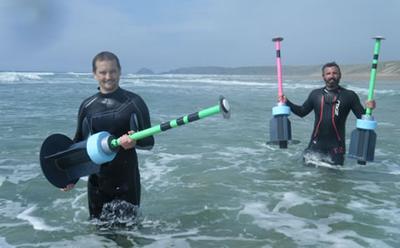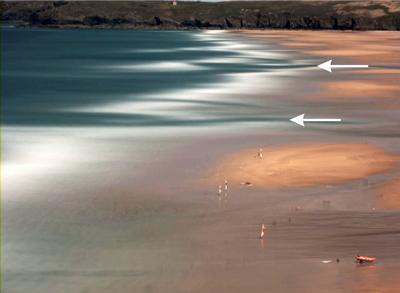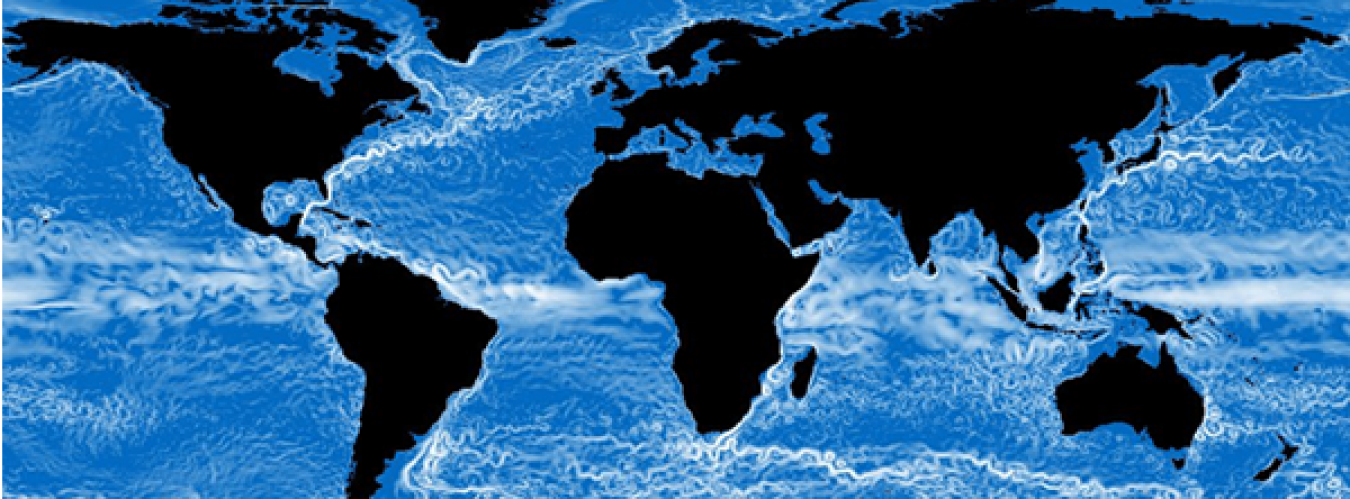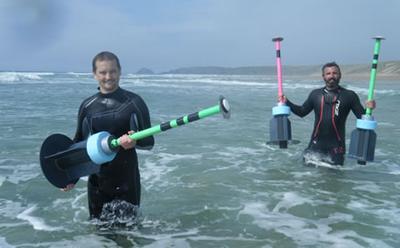This is a press-release for a paper by PhD student Seb Pitman and his supervisor Ivan Haigh – Wave breaking patterns control rip current flow regimes and surf zone retention, which can be accessed here.
———————-
Research by the Universities of Southampton and Plymouth has found a new link between breaking waves and the hazard posed by rip currents.
The research provides a better understanding why some surf zone conditions are more hazardous than others and could result in more lives being saved.

Researchers Dr Ivan Haigh (left) and Dr Cristos Mitsis deploying GPS drifters.
Hazardous rip currents are features on many beaches worldwide, and are thought to account for 68 per cent of rescue events involving the Royal National Lifeboat Institution’s beach lifeguards in the UK.
The study, which also involved researchers from Macquarie University (Sydney, AUS), and Deltares (Netherlands), used a combination of video imagery and in-situ rip current measurements at Perranporth Beach in Cornwall, which is well known for experiencing dangerous rips.
The researchers found that when waves break across the end of a rip channel, it in effect closes the channel and stops the currents from travelling far offshore. Crucially, however, they found that the absence of breaking waves across the channel promotes the formation of a much more hazardous rip current that can extend far offshore.
Sebastian Pitman, a PhD student in Ocean and Earth Science at the University of Southampton, who led the study, said: “For the first time, we combined images captured by cameras at the beach to detect wave breaking and GPS drifters to track the rip currents to better understand what drives rip dynamics. We used the images to identify whether the waves were breaking across the end of the rip channel, or not, and worked out what behaviour the GPS drifters in the rip current were exhibiting at those times.”

Co-author Associate Professor Ivan Haigh, also of Ocean and Earth Science at the University of Southampton, said: “The combination of video imagery and GPS allowed us to identify that when wave breaking occurred across the rip channel, the rip current was often prevented from flowing far offshore. This would mean that anyone trapped in the current would be kept relatively close to the beach. However, when the waves ceased to break across the channel, we noticed that the rip currents would instead flow far offshore, presenting a much greater hazard to swimmers.”
This is the latest research into rip currents involving the University of Plymouth, with previous work having focussed on combining GPS drifter data with information recorded using current meters and water level sensors. This study builds on existing research between Plymouth and the RNLI and, for the first time, uses images captured at the beach to provide a comprehensive picture of the threats posed by rip currents.
Gerd Masselink, Professor of Coastal Geomorphology at the University of Plymouth, said: “It is possible to use the visually-observed wave breaking patterns to better understand why some surf zone conditions are more hazardous to bathers than others. This new information provides a useful means by which lifeguards on the beach can assess the hazard posed by a beach at a given time, which could result in more lives being saved.”
The findings are published in the Marine Geology journal, and are available here: http://www.sciencedirect.com/science/article/pii/S0025322716302821

